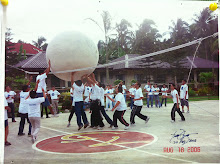Recently I’m trying on Linux and particularly got interested with Fedora. Well one reason is because our server is running on Fedora and curious as I am, I’ve installed one in one my workstation. My curiosity got me going, so I tried to put one also in my LG Xnote P1 laptop. So there, done with the installation, however got problems with my Ethernet controller (Agere Systems ET-131x). So I tried to pull some strings from the net and search for solutions. Several hits came up, unfortunately for FC 11/12 (Installing Agere ET-131x driver for Fedora 11/12) or lower versions. For 2 days I kept on looking for solutions, and I just don’t want to give up. Some sort of a personality in me. Anyway, I stumbled upon an error when I tried installing the said driver in the aforementioned blog that made me think that I probably don’t have an updated kmod (and the driver is for FC 11/12, right?). So what is kmod? According to Chapter 11 of Linux Device Drivers, 2nd Edition, kmod is a facility meant to save you from recompiling your modules each time you upgrade your kernel. So you don’t have to compile your drivers before installing them. (Whew! Thanks a lot!) So without further ado, here are the steps that I did to work around Agere’s ET-131x etherboot controller problem in my LG XNote P1 notebook with Fedora Core 14 – Kernel version 2.6.35.6-45.fc14.i686.
- Download staging-kmod-commons first because it is needed by the next package. For my installation, I used version 2.6.35.6-1.fc14.noarch.rpm.
- Install using rpm: $ rpm -Uvh filename.rpm. I suggest to autocomplete the filename since it’s a bit long.
- Download kmod-staging rpm for i686. You can find the rpm list by name, packages starting with K. Mine is version 2.6.35.6-45.fc14.i686-2.6.35.6-1.fc14.i686
- Install using rpm: $ rpm -Uvh filename.rpm
- Reboot then it will automatically detect the eth0 for you, installed driver for your ET-131x Ethernet controller and a working network. :)








0 comments:
Post a Comment